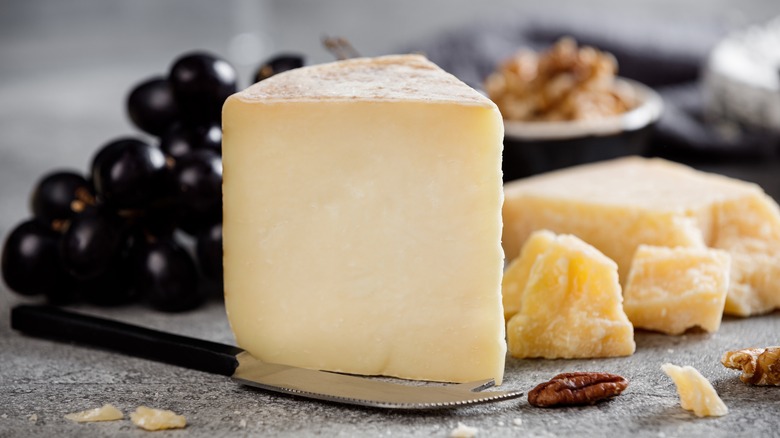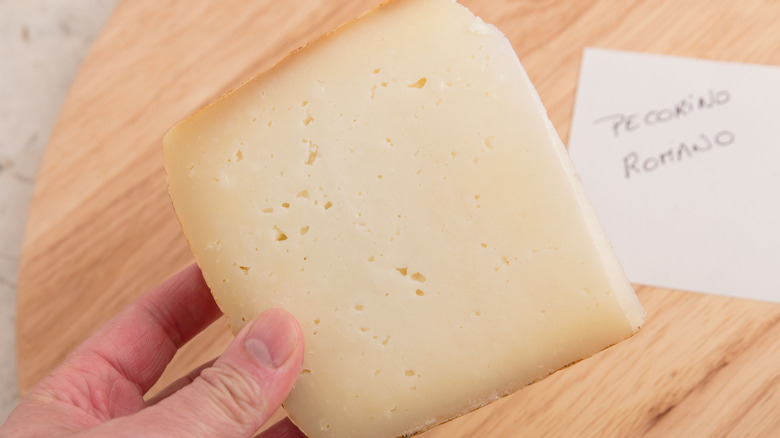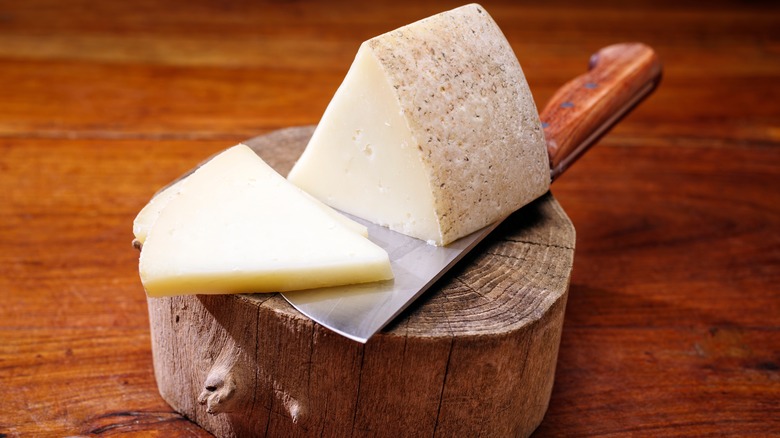The Popular Italian Cheese That Is Actually Lactose-Free
What's not to love about cheese? That delicious, tangy delight tempts your taste buds the moment its mouthwatering scent hits the room. Whether grated over a steaming plate of spaghetti Bolognese or melted to perfection over your favorite pizza, cheese adds just the right kick to nearly any meal. And when it comes to packing a punch, a popular choice that delivers an unmistakably salty hit to many dishes is Pecorino Romano. Its sharp bite, nutty undertones, and crumbly texture have the power to elevate the flavor of anything from pasta to salads, enhancing the taste to a level that leaves you craving every last bite.
But what if you're lactose intolerant, and that quick cheesy fix you're looking for leaves you with a tummy ache or makes you feel bloated for days? Although most dairy products contain lactose — a type of milk sugar that can be difficult for some people to digest — you actually don't have to give up your love for cheese entirely. There are plenty of options that are lactose-free or contain only slight amounts of lactose, and it turns out that Pecorino Romano is one of them. That's why next time you go on a cheese hunt in your local supermarket, don't hesitate to reach for it.
Why is Pecorino Romano safe for those with lactose intolerance?
A favorite among cheese fans, Pecorino Romano is an essential ingredient in Rome's four signature pasta dishes: carbonara, amatriciana, cacio e pepe, and gricia. But who would have thought that it contains almost no lactose? This is due to its lengthy aging process, which typically lasts from eight to 12 months. During this maturation process, bacteria break down its lactose content and turn it into lactic acid.
Fresh Pecorino Romano is a blessing in disguise for cheese lovers with lactose intolerance. The amount of lactose is entirely absent in cheeses aged for over four months. So if you're still pondering whether to sprinkle a generous handful of Pecorino on top of your next homemade pasta or boost the flavor of your roasted veggies and soups, don't be shy and go for it!
A staple for the Roman legionaire diet
Made from sheep's milk — reflected in its name, which translates to "sheep's cheese of Rome" — Pecorino Romano was a dietary staple for the legionaries of ancient Rome. This is because it was easy to preserve due to its high salt content.To meet their daily calorie requirements, they were provided with a piece of Pecorino Romano, complementing their serving of bread and farro soup. It was rich in nutrients and easy to digest.
After Pecorino Romano was awarded the Protected Designation of Origin (PDO) certification in 1996, most of its production shifted to Lazio, in the province of Grosseto and Sardinia, where it continues to be made following traditional recipes dating back to 227 BC. As one of Italy's oldest cheeses, it ranks among the country's top exports.


